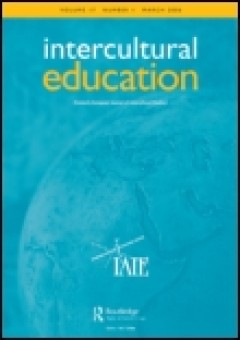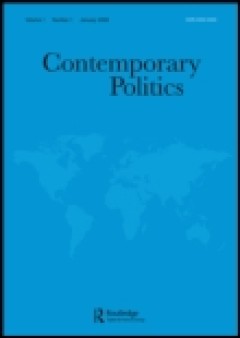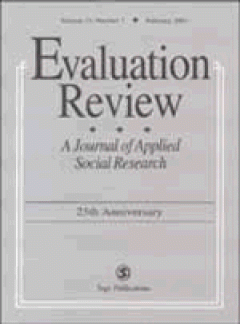Filter by

Finding common ground in education about the Holocaust and slavery
In scholarship on the Holocaust and the history of slavery, historians and other academics have, over the years, developed both abstract concepts and concrete activities. Teachers and developers of educational materials have translated complex events into digestible entities fit for use within and outside the classroom, often including new insights and new approaches in their teaching. This pap…
- Edition
- Volume 21, Issue S1 2010 , pages S61 - S69
- ISBN/ISSN
- 14675986
- Collation
- -
- Series Title
- Intercultural Education
- Call Number
- -

Thaksin Shinawatra and the reshaping of Thai politics
Twice elected prime minister of Thailand at the head of his Thai Rak Thai Party, telecommunications magnate Thaksin Shinwatra was controversial in office. Since his government was overthrown by a September 2006 military coup backed by the palace, conservatives, and a broad coalition of opponents, Thaksin has remained at the centre of Thailand's continuing political turmoil. This paper examines …
- Edition
- Volume 16, Issue 2 June 2010 , pages 119 - 133
- ISBN/ISSN
- 13569775
- Collation
- -
- Series Title
- Contemporary Politics
- Call Number
- -

Islamization in Malaysia: processes and dynamics
Over the past three decades Malaysian society has undergone radical change and transformation. On one level this has been brought about by the country's rapid economic transformation, but equally significant has been the deepening Islamization of the country. From banking to law, from dress to education policy, almost no sector of Malaysian society has escaped the growing influence of Islam upo…
- Edition
- Volume 16, Issue 2 June 2010 , pages 135 - 151
- ISBN/ISSN
- 13563890
- Collation
- -
- Series Title
- Contemporary Politics
- Call Number
- -

The twenty-first century Armed Forces of the Philippines: orphan of counter-i…
This article examines the factors that account for the Armed Forces of the Philippines's (AFP) never-ending involvement in many wars of the third kind. It discusses the essence of counter-insurgency warfare or low-intensity conflict in the Philippine setting. The article then notes that the disruption in the US military assistance after 1992, the AFP's inability to modernize, and its continuous…
- Edition
- Volume 16, Issue 2 June 2010 , pages 153 - 171
- ISBN/ISSN
- 13569775
- Collation
- -
- Series Title
- Contemporary Politics
- Call Number
- -

Stakeholder security: the new western way of counter-terrorism?
This article explores the ways in which Western states have adapted their counter-terrorism strategies to meet the demands of a post-9/11 era. Focusing on the USA and UK as illustrative case studies, this article charts the emergence of a new, complex topography of security measures aimed at confronting the threat of unconventional violence from above and below. Of particular interest is the co…
- Edition
- Volume 16, Issue 2 June 2010 , pages 173 - 188
- ISBN/ISSN
- 13569775
- Collation
- -
- Series Title
- Contemporary Politics
- Call Number
- -

A conservative convergence? The differences and similarities of the conservat…
This paper compares and contrasts the conservative right in both the Czech Republic and Poland in its historical and contemporary contexts. It argues that the conservative right is strong in both these countries and that they share many similar political features. However, there are also numerous differences between the conservative right in these nations. The reasons for these dissimilarities …
- Edition
- Volume 16, Issue 2 June 2010 , pages 189 - 207
- ISBN/ISSN
- 13569775
- Collation
- -
- Series Title
- Contemporary Politics
- Call Number
- -

The carcass of dead policies: lessons for Obama in dealing with Iran
The United States has spent 30 years clinging to variations of the same policy towards Iran, to no avail. 'Doing the right thing' has proved perplexing, complicated and, ultimately, elusive. In 1979, the United States struggled to come to terms with Iran's transformation from consort to adversary. Washington had difficulty fitting Iran into the hierarchy of regional and international priorities…
- Edition
- Volume 16, Issue 2 June 2010 , pages 209 - 223
- ISBN/ISSN
- 13569775
- Collation
- -
- Series Title
- Contemporary Politics
- Call Number
- -

Nuclear Revival in Post-Suharto Indonesia
Indonesia is planning to build a nuclear power plant to meet soaring demand for energy. Opposing this policy, an anti-nuclear alliance is emerging from grassroots groups driven by distrust of the government's ability to handle high-risk technology. This article explores the contemporary politics of Indonesia's nuclear power program.
- Edition
- Vol. 50, No. 2, March/April 2010, Pages 265–286
- ISBN/ISSN
- 00044687
- Collation
- -
- Series Title
- Asian Survey
- Call Number
- -

Agents of Taiwan-China Unification? The Political Roles of Taiwanese Business…
The political roles of Taiwanese business people (taishang) in cross-strait relations have been increasingly noteworthy under Hu Jintao's policy of "counting on the Taiwanese people." But contrary to widely accepted allegations, this paper argues that attempts by China to use Taiwanese business people as a means to gain political leverage over Taiwan will probably not pan out as a successful st…
- Edition
- Vol. 50, No. 2, March/April 2010, Pages 287–310
- ISBN/ISSN
- 00044687
- Collation
- -
- Series Title
- Asian Survey
- Call Number
- -

The Transformation of Mongolia's Political System: From Semi-parliamentary to…
This paper outlines Mongolia's regime transformation, focusing on its 2000 constitutional amendments that turned Mongolia into a parliamentary system, albeit with a popularly elected fixed-term president. The paper also emphasizes the prominence of institutional authority to form the executive in determining regime type, and makes an effort to clarify Duverger's second criterion of semi-preside…
- Edition
- Vol. 50, No. 2, March/April 2010, Pages 311–334
- ISBN/ISSN
- 00044687
- Collation
- -
- Series Title
- Asian Survey
- Call Number
- -

South Korean Strategic Thinking toward North Korea: The Evolution of the Enga…
Despite agreements in 2007 in the Six-Party Talks, the U.S. and South Korea have had trouble reaching consensus in dealing with subsequent nuclear crises spawned by North Korea. This study focuses on South Korean strategic thinking about and policy toward North Korea and Korean unification, and their changes since the 1990s.
- Edition
- Vol. 50, No. 2, March/April 2010, Pages 335–355
- ISBN/ISSN
- 00044687
- Collation
- -
- Series Title
- Asian Survey
- Call Number
- -

Private Equity and Asian Political Economy: "Domestic" Private Equity Funds a…
Private equity funds, particularly those headquartered in the U.S., have come under heavy attack internationally from civil society and regulators. At the same time, locally owned private equity funds have unexpectedly appeared in significant numbers across emerging markets. The analysis in this paper illustrates how actors that are only notionally domestic are introducing the neoliberal privat…
- Edition
- Vol. 50, No. 2, March/April 2010, Pages 356–377
- ISBN/ISSN
- 00044687
- Collation
- -
- Series Title
- Asian Survey
- Call Number
- -

Climate Change and Regime Perpetuation in North Korea
Climate change is a new variable that may weaken the Kim Jong-il regime by disrupting North Korea's agricultural sector, leading to greater food insecurity and erosion of the state's institutions. North Korea has limited capacity to adapt to climate hazards, which could exacerbate existing stresses and push the regime into terminal decay.
- Edition
- Vol. 50, No. 2, March/April 2010, Pages 378–401
- ISBN/ISSN
- 00044687
- Collation
- -
- Series Title
- Asian Survey
- Call Number
- -

India's Developing Relationship with South Korea: A Useful Friend in East Asia
The long-standing strategic disconnect between South Asia and the Korean Peninsula is breaking down. Driven by the changing balance of power in Asia, India and South Korea have developed a strong economic partnership, and taken small but significant steps toward a political and security relationship that refects their numerous shared strategic interests. This article explores the contours of th…
- Edition
- Vol. 50, No. 2, March/April 2010, Pages 402–425
- ISBN/ISSN
- 00044687
- Collation
- -
- Series Title
- Asian Survey
- Call Number
- -

Resources, Rent-Seeking, and Reform in Thailand and Myanmar (Burma): The Econ…
This article examines the economics-politics nexus in Thailand and Myanmar in the context of rent-seeking, revenues from oil and gas resources, and possible political reform.
- Edition
- Vol. 50, No. 2, March/April 2010, Pages 426–448
- ISBN/ISSN
- 00044687
- Collation
- -
- Series Title
- Asian Survey
- Call Number
- -

Metric Properties of the Neighborhood Inventory for Environmental Typology (N…
Objectives: Establish metric properties of the Neighborhood Inventory for Environmental Typology (NIfETy). Method: A total of 919 residential block faces were assessed by paired raters using the NIfETy. Reliability was evaluated via interrater and internal consistency reliability; validity by comparing NIfETy data with youth self-reported violence, alcohol, and other drug exposure and crime sta…
- Edition
- Vol. 34, No. 3, June 2010. pp.159-184
- ISBN/ISSN
- 0193841x
- Collation
- -
- Series Title
- Evaluation Review
- Call Number
- -

Exploring Methods to Investigate Sentencing Decisions
The determinants of sentencing are of much interest in criminal justice and legal research. Understanding the determinants of sentencing decisions is important for ensuring transparent, consistent, and justifiable sentencing practice that adheres to the goals of sentencing, such as the punishment, rehabilitation, deterrence, and incapacitation of the offender, as well as reparation for the vict…
- Edition
- Vol. 34, No. 3, June 2010. pp. 185-219
- ISBN/ISSN
- 0193841x
- Collation
- -
- Series Title
- Evaluation Review
- Call Number
- -

The Cost-Effectiveness of NBPTS Teacher Certification
A cost-effectiveness analysis of the National Board for Professional Teaching Standards (NBPTS) program suggests that Board certification is less cost-effective than a range of alternative approaches for raising student achievement, including comprehensive school reform, class size reduction, a 10% increase in per pupil expenditure, the use of value-added statistical methods to identify effecti…
- Edition
- Vol. 34, No. 3, June 2010. pp. 220-241
- ISBN/ISSN
- 0193841x
- Collation
- -
- Series Title
- Evaluation Review
- Call Number
- -

Measuring Law for Evaluation Research
Evaluations that combine social science and law have tremendous potential to illuminate the effects of governmental policies and yield insights into how effectively policy makers� efforts achieve their aims. This potential is infrequently achieved, however, because such interdisciplinary research contains often overlooked substantive and methodological challenges. This article offers detailed g…
- Edition
- Vol. 34, No. 3, June 2010. pp. 242-266
- ISBN/ISSN
- 0193841x
- Collation
- -
- Series Title
- Evaluation Review
- Call Number
- -

Principles for a Cultural Psychology of Creativity
This article focuses on a novel theoretical paradigm emerging in the study of human creativity: the cultural-psychological approach. It starts by differentiating between the long past of individualistic accounts of creativity (the lonely genius) and the short history of psychological understandings (the creative individual). The social and the cross-cultural psychology of creativity are both co…
- Edition
- Vol. 16, No. 2, June 2010. pp. 147-163
- ISBN/ISSN
- 1354067x
- Collation
- -
- Series Title
- Culture & Psychology
- Call Number
- -
 Computer Science, Information & General Works
Computer Science, Information & General Works  Philosophy & Psychology
Philosophy & Psychology  Religion
Religion  Social Sciences
Social Sciences  Language
Language  Pure Science
Pure Science  Applied Sciences
Applied Sciences  Art & Recreation
Art & Recreation  Literature
Literature  History & Geography
History & Geography